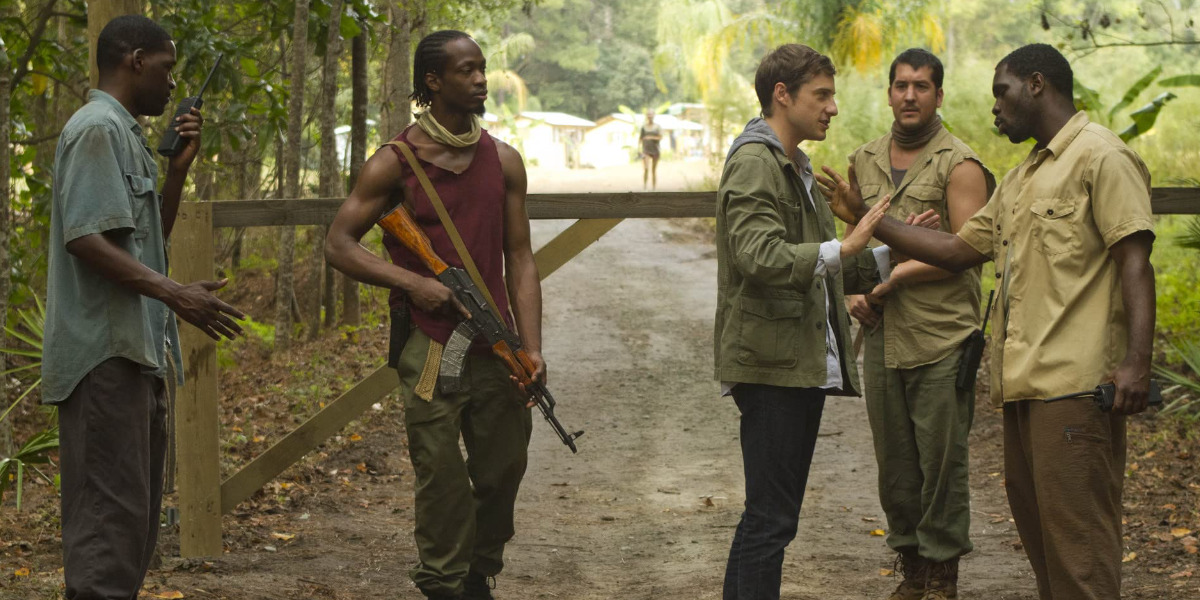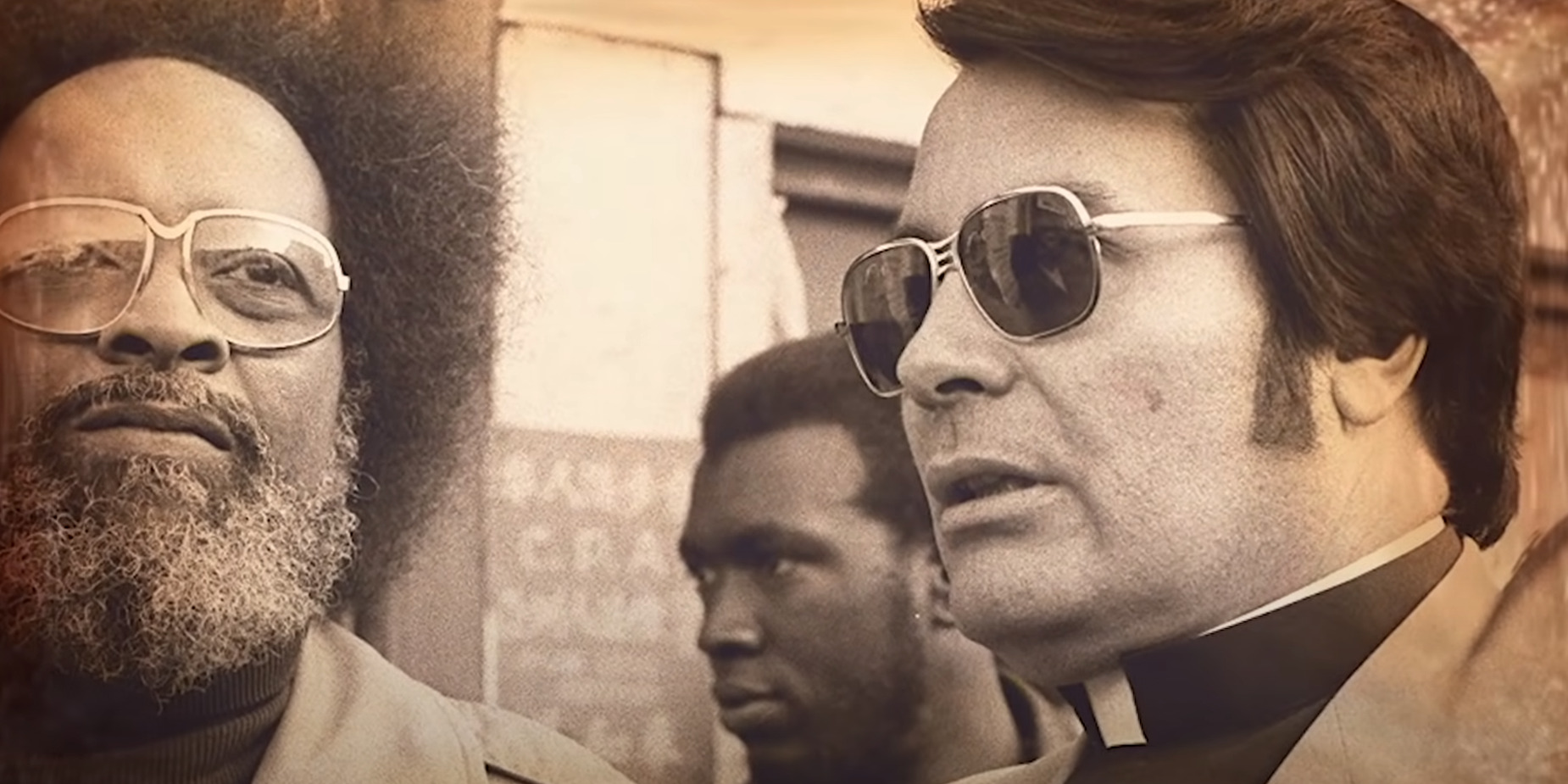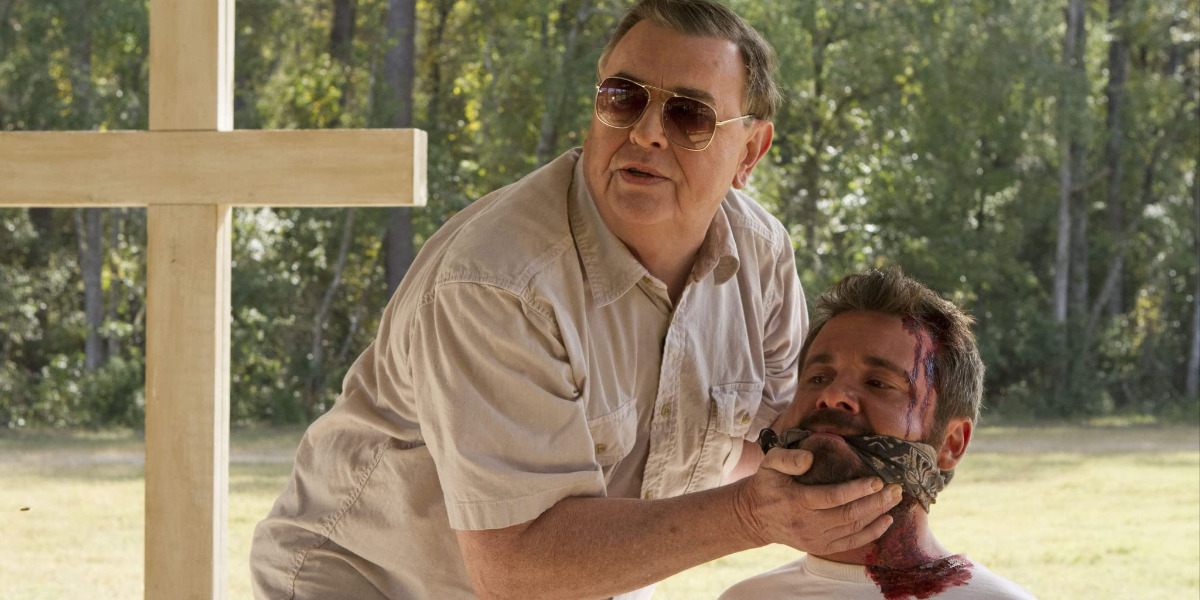‘The Sacrament’ is a 2013 found-footage horror film directed by Ti West featuring AJ Bowen, Amy Seimetz, and Gene Jones. The film revolves around a remote free-living community of a religious leader dubbed The Father. Sam and Jake, two journalists, visit the commune, Eden Parish, intending to document their journey. The resulting day proves to be the strangest 24 hours of their lives, wherein they witness people’s cult-like devotion to The Father that leads them to their final demises.
The found footage format of the film adds heavy realism to a story that easily and effectively reflects real life. With themes of blind faith, harmful religion, and manipulative mass exploitation, the film reinforces the American cult panic of the 60s and 70s. As such, viewers might wonder if the events depicted in the film are based on true events. If you’re curious about the same, here is everything we know about the inspiration behind ‘The Sacrament.’
The Sacrament: Inspired by the Jonestown Massacre
Yes, ‘The Sacrament’ is partially based on a true story. The film follows the end of an isolated community cultivated by Charles Anderson Reeds. One of Reeds’s followers, Caroline, invites her brother, Patrick, to the parish, hoping to recruit him into the cult. However, Patrick brings along two of his friends, Vice reporters Sam and Jake. After some Parishioners try to leave the commune with Sam, Reeds stops them and shepherds his followers to mass suicide. Guards open fire at the residents who are reluctant to follow Reeds’ final orders, and 167 people lose their lives inside Eden Parish.

This overarching plotline of an exploitative cult’s grim end is directly inspired by the real-life events of the 1978 Jonestown Massacre. Reverand Jim Jones formed a deceitful socialist community, Peoples Temple, in the jungles of South America. Jones’ cult met a similar end after it saw exposure to the outside media through an investigation conducted by Californian Congressman Leo Ryan.
Following Congressman Ryan’s visit to Jones’ cult, several members tried to escape Jones’ control by leaving with Ryan. However, Jones sent armed men after the group, which resulted in the collective death of Ryan, his crew members, various other reporters, and an escaped member. Later Jones compelled his followers, including young children, to commit suicide by consuming a concoction of deadly poisons.

Like, Reeds from ‘The Sacrament,’ Jones also chose to die through a bullet instead of poison. As such, there are definitely some similar broader elements between the fictionalized account of Eden Parish and the real-life tragedy of Jonestown. Still, the two stories bear some notable differences. For instance, only reporters Sam and Jake make it out of the ordeal alive in the film. However, in real life, 33 people out of the 1000 who belonged to Jones’ cult made it out of the massacre with their lives. Such distinction between the two events is an intentional decision by writer and director Ti West.
West felt like one would require more than two hours to tell a story about the actual Jonestown tragedy. “I’d always been fascinated with Peoples Temple,” West said in an interview with Collider while discussing ‘The Sacrament.’ “History tends to repeat itself. Here’s a way for me to make a fictional cult that ends like what happened in Jonestown and show that the things that brought people to join Peoples Temple in the ’60s and the ’70s are still relevant today, and that tragedy that happened, something like that is not extremely farfetched today. And again, just to confront you with this is what real horror looks like.”
Jones wanted to create a horror film that would stick with people after leaving the cinemas. The real-life connection between his movie and Jonestown adds to the narrative’s authenticity and builds a lingering unsettling feeling for the viewers. According to West, the real-life relevance of manipulative cults and the threats they pose painted for the viewers a villain who was more scary and relatable than fictional monsters.
Moreover, the film deliberately presents the fragile desperation of people targeted by such cults in depth to provide a better understanding of such an instance. The dangers of cults depicted in ‘The Sacrament’ have a deep basis in reality, even outside of the Jonestown Massacre.
During the 60s and 70s, the American population was prone to cult and cult-like mindsets. According to a 1978 New York Times article, an estimated 2,500 to 3,000 cults were operating in the U.S. with anywhere between 300,000 to three million members. Though not all cults were proven to be harmful, the toxicity of a cult was difficult to measure without any tangible proof. Nevertheless, the themes of religious exploitation and its utilization by cult leaders, as explored in ‘The Sacrament,’ are inspired by real-life events, particularly the mass murder-suicide massacre of Jonestown.
Read More: Best Religious Cult Movies of All Time


You must be logged in to post a comment.